To ensure protection against current and emerging aerial threats, expeditionary and manoeuvre forces must be accompanied by vehicles mounting anti-drone capable weapons. Various approaches to the mobile counter-UAV (C-UAV) mission are undergoing testing or development.
Small unmanned aerial vehicles (UAVs) and loitering munitions have become a major threat to military forces, as demonstrated in the Middle East and in Ukraine. They can be fielded in large numbers, and are frequently difficult to detect or target. They range from sophisticated, state-produced systems to improvised systems based on commercial and hobbyist drones. The mission spectrum includes reconnaissance and artillery spotting, delivery of small bombs, and suicide attacks by explosives-laden drones.
Manoeuvre forces require organic or attached C-UAV vehicles to optimally defend themselves against drone attack or neutralise surveillance aircraft. Numerous new C-UAV systems are currently being introduced, tested or developed. When dedicated C-UAV systems are not available, motorised and mechanised units must make the best possible use of their standard weapon systems. To this end, C-UAV tactics utilising standard machine guns and other mounted weapons are being developed and practised. Temporary static positions such as expeditionary base camps, command posts or relay stations also require mobile C-UAV defences, although the optimal configuration may differ from that required by manoeuvre forces.
Vehicle-mounted C-UAV options for mobile and expeditionary forces can be divided into kinetic weapons and energy weapons. Kinetic options include machine guns, grenade launchers/cannons, and interceptors. Energy weapon options are divided into lasers, microwave weapons and electronic jammers.
In addition to the actual weapons, the C-UAV mission also requires corresponding sensors and fire control systems (FCS) to detect, classify, follow and engage drones in a coordinated and effective manner. Options here include radars, direction finders (to detect communication signals emanating from the drone), optronic day and infrared (IR) cameras, as well as acoustic sensors. Employing a combination of these technologies as a layered detection system can result in a more reliable and effective defence.
Small and medium-calibre solutions
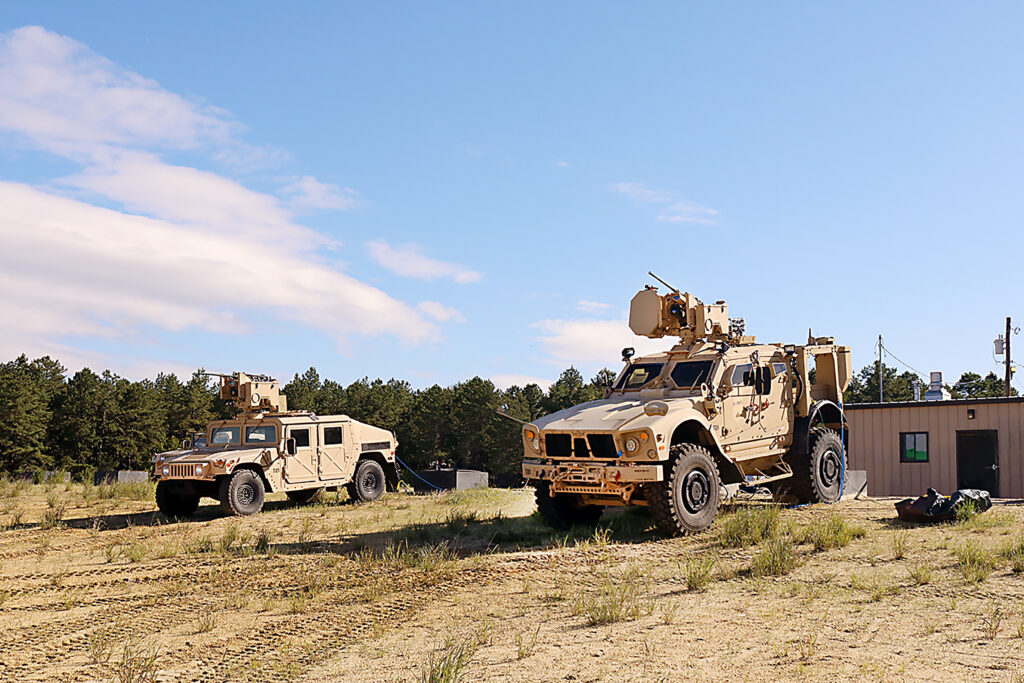
The United States Army has been pursuing several sensor and fire control solutions including the Ballistic Low Altitude Drone Engagement (BLADE) system. The BLADE system integrates with the Common Remotely-Operated Weapon Station (CROWS) mounted on many vehicles. It utilises the CROWS’ optical sensors in conjunction with fire control software to engage small UAVs. The engagement range has been estimated at 500 m against moving targets or 800 m against stationary targets; these figures are understood to refer to when the system is equipped with the M2 HB 12.7 mm HMG, as most commonly seen used in BLADE trials.
Moving up the weapon scale, medium-calibre automatic cannons deploying airburst munitions have shown considerable promise for the C-UAV mission, both against single aircraft and against drone swarms. In 2022, the US Army introduced the XM1211 30 × 113 mm high explosive proximity (HEP) ammunition. Developed by Northrop Grumman specifically for defeating small drones (including drone swarms), the rounds use an embedded radio-frequency proximity sensor to detect when the round is in the vicinity of a UAV, following it triggers detonation of the round once it has reached optimal vicinity to the target, showering the target with fragments. As described by Rylan Harris, director of advanced ammunition for Northrop Grumman’s Armament Systems unit, the embedded electronics have been ruggedised to withstand muzzle velocities up to 100,000 g.
“We’re also developing an even smarter weapon system called guided medium calibre ammunition” that constitutes a “leap-ahead technology”, Harris explained. These projectiles will incorporate the proximity-fused munition technologies, but also generate onboard electrical power and provide continuous trajectory guidance in a single integrated package. The guided medium-calibre ammunition is expected to provide a new level of burst-point accuracy that will increase the likelihood of hitting moving targets.
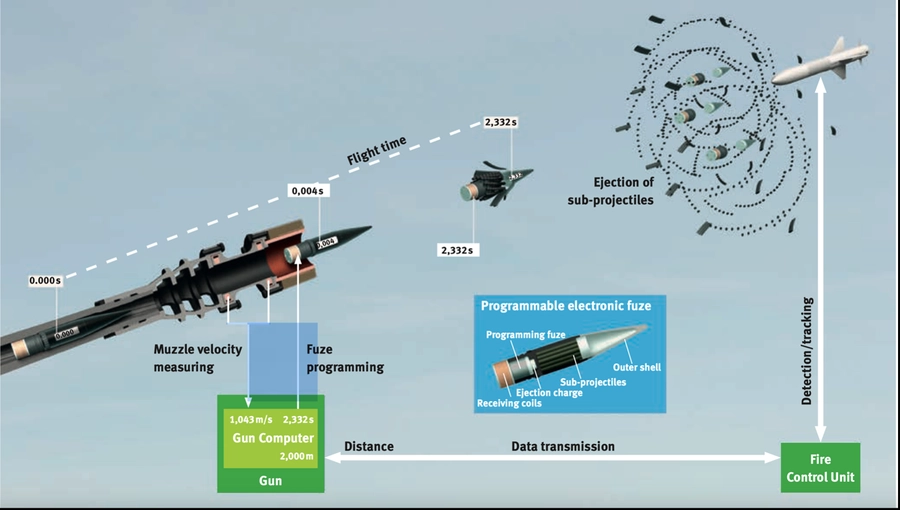
Powered interceptors
Rocket-powered and air-breathing interceptors are another means of destroying drones. However, many common surface-to-air missiles (SAMs) are not just overkill, but often cost far more than the target they are engaging. The US Army is pursuing the next-generation counter-uncrewed aerial system missile (NGCM) development programme, which aims to defeat drones up to NATO size classification Class 3 (>600 kg) using low-cost interceptors. In June 2024, the service confirmed that RTX and BlueHalo had been awarded prototyping contracts. Prototype testing is expected to be completed by the end of 2025, although the Army has announced plans to re-open the competition to other vendors currently developing C-UAV interceptors with the potential to also combat rockets and cruise missiles.
RTX’s entry is based on the tube-launched Coyote Block 2+, a turbojet-powered SAM with a maximum range of approximately 15 km, which is already being used by the US in the C-UAV mission. The missile uses a small rocket booster to launch the missile from its launch tube and provide an initial boost to acceleration, at which point the turbojet engine takes over, propelling it to its top speed of around 555 km/h. The Coyote is equipped with a Ku-band active radar seeker for terminal guidance and a proximity-fuzed high-explosive fragmentation (HE-FRAG) warhead.
Raytheon has also developed the Coyote Block 3NK variant, which uses a very similar design to the older Coyote Block 1 design, likewise using wings and a pusher-prop for propulsion, and likely reaching similar top speeds of circa 130 km/h as the Block 1. The Coyote Block 3NK is advertised as using a ‘non-kinetic warhead’ to neutralise multiple drones simultaneously. While RTX have not provided much concrete information on the nature of the Block 3NK’s warhead, it is believed to consist of a high-power microwave (HPM) effector – conceptually similar to the approach taken by Lockheed Martin with Morfius.
Also aimed at the NGCM programme, US company BlueHalo is putting forward its Freedom Eagle 1 (FE-1) design, which has also been previously marketed under the ‘Next Generation Missile’ (NGM) name. FE-1 follows a relatively conventional missile design scheme, and is powered by a dual-thrust solid propellant rocket motor. In terms of dimensions, appears roughly similar in length to a MANPADS missile, and wider in diameter.
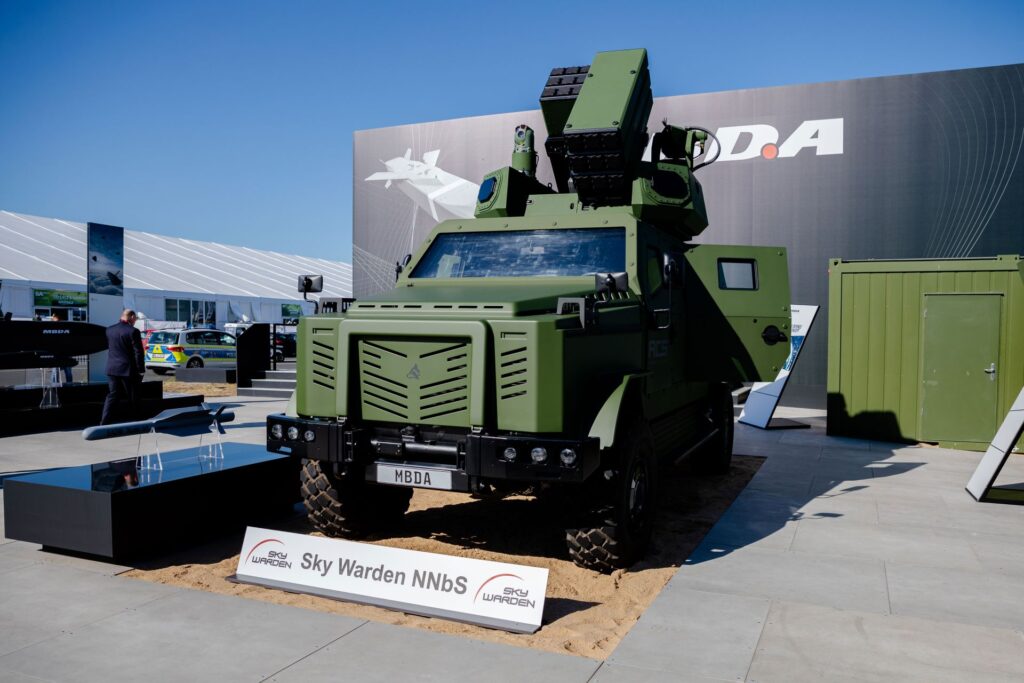
High-energy lasers
High-energy lasers (HELs) are considered to have great potential for the counter-drone mission. This is largely based on the ability to rapidly engage targets, as well as the fact that their ‘cost-per-shot’ is considerably lower than conventional cannon or missile-based solutions. Numerous developments and testing programmes for vehicle-mounted HELs are ongoing.
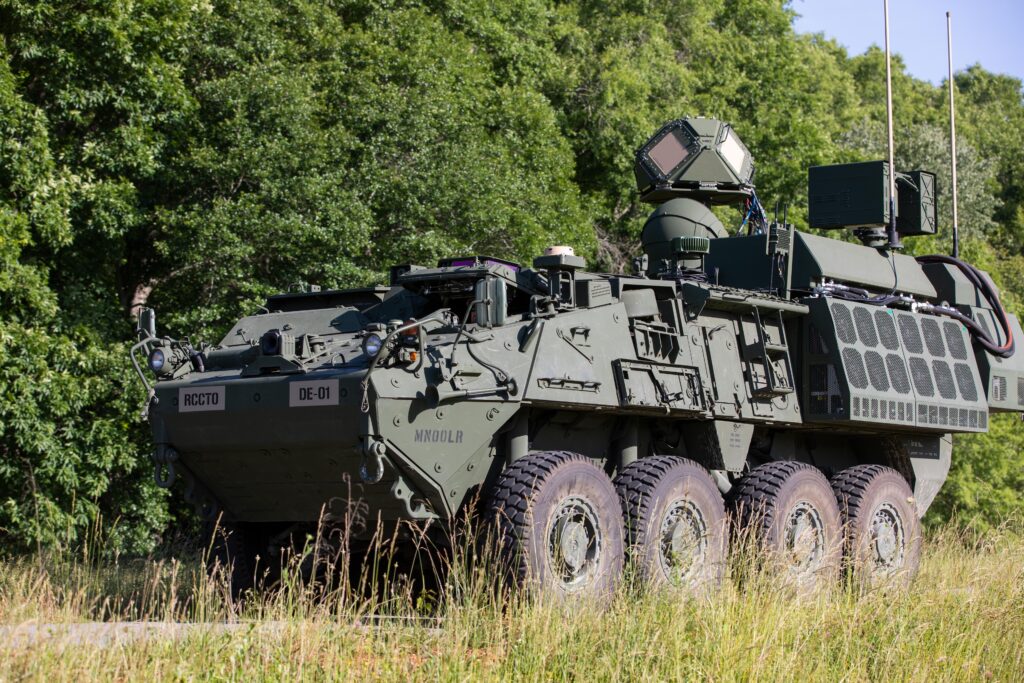
Regardless of the actual results, the US military remains determined to continue HEL development. In August 2024, Lt. Gen. Robert Rasch, Director of the Army’s Rapid Capabilities and Critical Technologies Office, stated that the service plans to select several firms for a design and development competition for the Enduring HEL SHORAD programme. The competition is set to begin in early 2025, with down-select to one firm in early Fiscal Year 2026.
High-power microwave weapons
High-power microwave (HPM) weapons can damage a UAV’s electronic components including sensors, communications systems and propulsion, effectively neutralising the drone’s key systems, and/or causing it to crash. The power output and beam width of HPMs can be scaled, enabling operators to adjust their destructive power and choose whether to direct the beam at a narrow or wider portion of airspace. Most expeditionary HPM systems being developed to date are too large for deployment on smaller vehicles, but industry is working on overcoming that limitation.
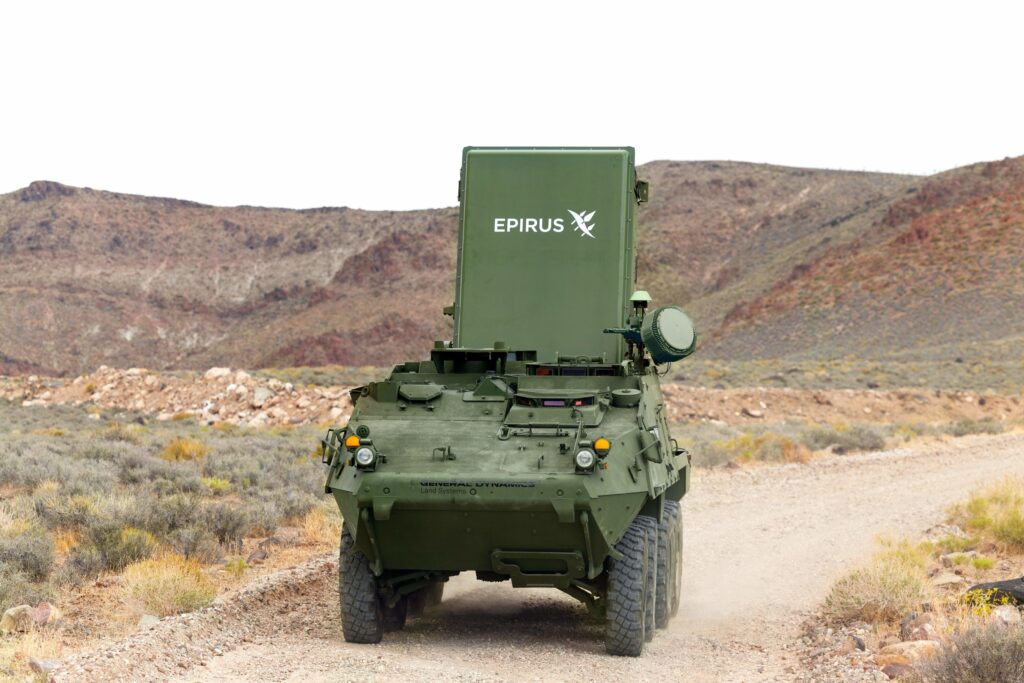
Electronic warfare systems
Electronic warfare (EW) systems can disrupt or ‘jam’ a UAV’s receivers, which are used to receive instructions from the ground control station or to receive positioning information from global naviation satellite systems (GNSS). High-performance EW systems can be mounted on armoured or unarmoured tactical vehicles, including ultralight vehicles. The US Marine Corp’s Light Marine Air Defense Integrated System (LMADIS) is a C-UAV system consisting of the CM262U optronic sensor; four fixed-face RPS-62 radars; the BlueHalo Titan-SV MPV3 direction finder (formerly known as the Verus SkyView-MP, until BlueHalo acquired Verus Technology Group); Sierra Nevada Corporation’s Modi II jamming system; and the AN/PRC-158 radio system for communication. The components are divided between two vehicles which work as a team, one carrying the sensors and one the EW system. The USMC chose the lightweight and agile Polaris MRZR combat vehicles as the LMADIS platform.
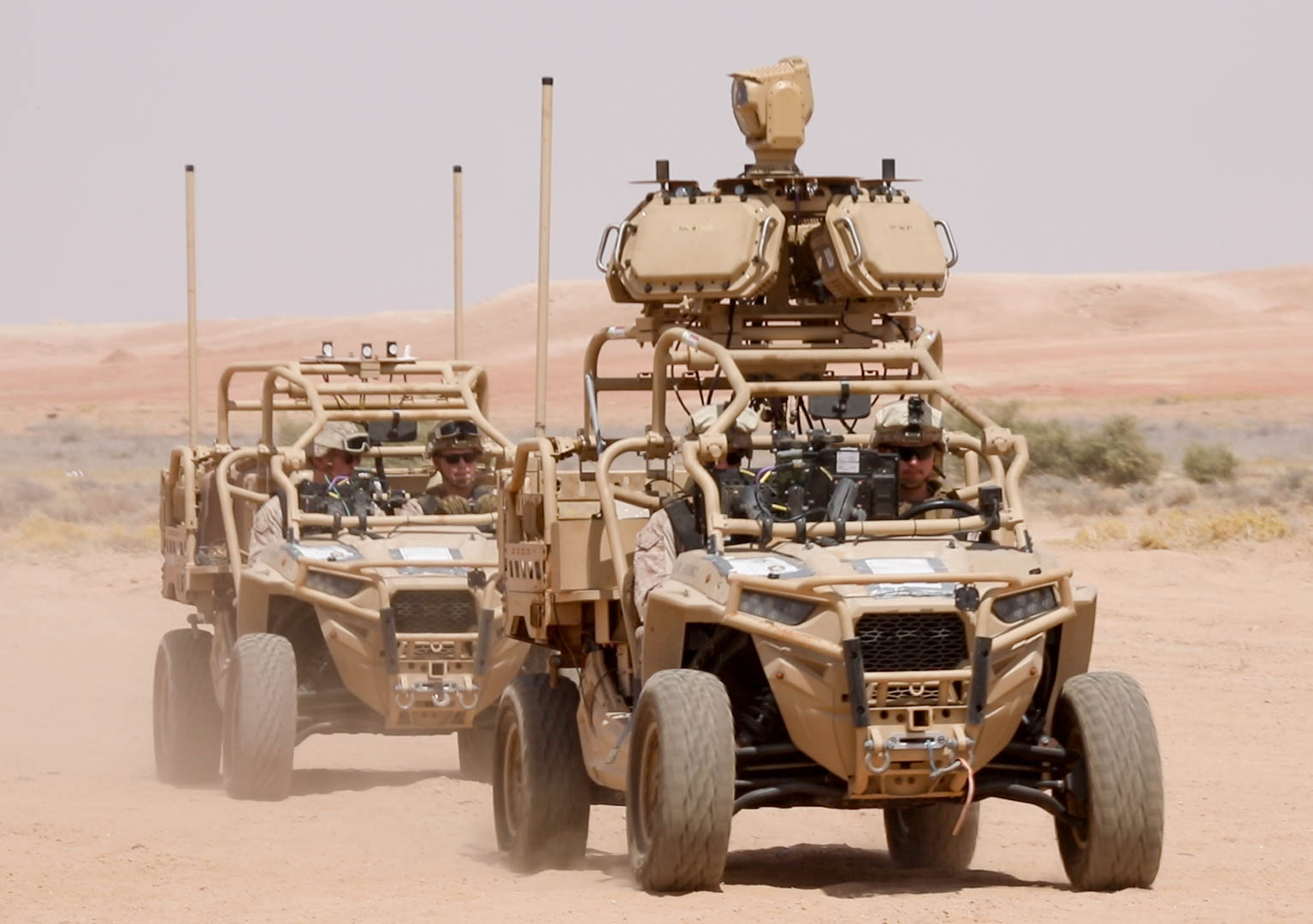
Looking ahead
A notable recent trend is the development and testing of C-UAV systems armed with more than one type of effector. Combining multiple, complementary weapons promises the best chance of intercepting drones with different flight characteristics or which have been hardened against one-or-another type of countermeasure.
Given that the UAV threat is diversifying, it is logical that armed forces and industry will continue to pursue mobile C-UAV systems that incorporate multiple attack options that complement one another’s capabilities. Even when optimised for the C-UAV mission, these systems can also address other aerial threats including missiles and helicopters. Multitasking weapon systems will be best suited to defending the manoeuvre force, regardless of what appears on the horizon.
Sidney E. Dean


